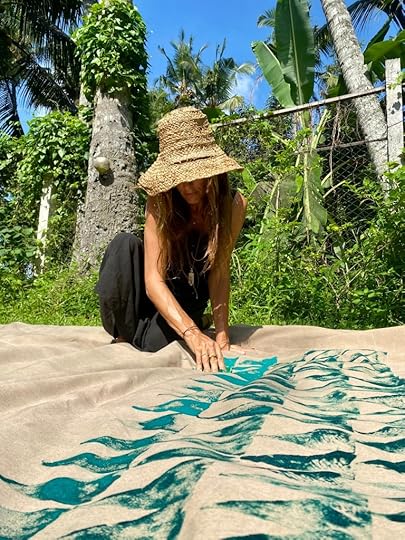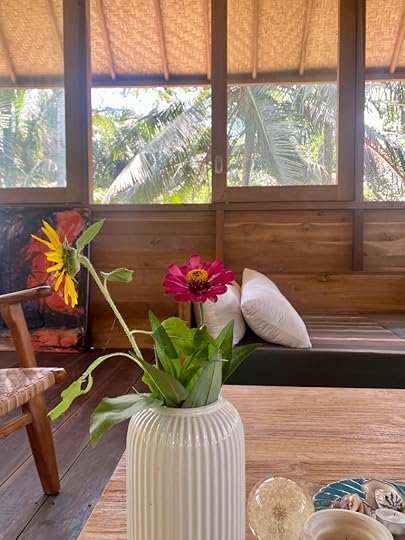Luxury redefined
Today’s luxury is not ostentatious and does not reflect status-driven purchasing power. Instead, luxury is associated with sustainability, the need for value-based communities, and a preference for the imperfect and the human. The new forms of luxury, which will be explored here, also focus on sensibility, slowness, and time.
Luxury in 2024 is interconnected with sensory, tactile experiences. As many of us spend countless hours daily in front of screens and on smartphones or tablets, our need for varied tactile experiences is not being fulfilled. We are, quite simply, tactilely malnourished. And for this very reason, there is an increasing demand for products that, in one way or another, stimulate our sense of touch; for example, handmade products, or products that imitate handcrafted details. Such items are often associated with time. Either with the time it took to make them (and the hands that shaped them) or with the time and traces of use that accumulate in them when they are used.
There is a longing for the imperfect in the need for tactility; for the antithesis of the clean, smooth, and homogeneous. As the Canadian anthropologist Grant McCracken writes in his book Return of the Artisan, in which he elaborates on what he calls “the artisan economy,” which he predicts will (or rather, is already beginning to) challenge and revolutionize the way we develop, produce, and consume things:
“For the artisans, the imperfect has life. Perfection on the other hand, is easy, and that makes it untrustworthy. Perfection is uniform, and that makes it a little tedious.”
The artisan economy represents an economic transformation driven by small, personal businesses. There is a high degree of hands-on and offline engagement in the emerging era of the artisan economy. Furthermore, it is rooted in a return to an old-fashioned local economy, where people shop in small privately-owned stores, know the shopkeepers personally, and focus more on loyalty and community than on getting a good deal or outside influences.
Thus, the artisan economy, in line with the original slow movement, is an antithesis to globalization and large homogeneous chain stores. And it not only presents an antithesis but also a real challenge for the large producers. The fast fashion industry and fast food chains must take the quiet revolution that the artisan economy represents seriously if they want to avoid a real coup d’état. Increased sustainability awareness and a growing need for unique, sensory-stimulating aesthetic products are fueling this already smoldering fire.
And it seems that many of the large chains have begun to recognize this looming threat. This awareness is manifested in their imitation of the artisan economy’s aesthetics; everything from embroidery to patterns that exude the charm of local, near and distant regions, as well as “unique” elements in the form of simulated irregularities (meant to evoke a sense of the handmade) and artificial wear and tear that forcibly adds a touch of vintage and upcycling to mass-produced clothing, demonstrates that the fast fashion industry has noticed that today’s trendsetters are part of the artisan movement.
 Me working on imperfect block printing of discarded tent canvas for upcycled rain ponchos for Southeast Saga
Me working on imperfect block printing of discarded tent canvas for upcycled rain ponchos for Southeast SagaIt is still relevant to talk about slow living. Even though the slow movement has been around for many years, it continues to thrive. Likely because it is constantly evolving. The core remains the same: less, but better, with slowness as a mark of quality. But its expression has changed and has branched out into a wide range of industries and products since the slow food movement first put the concept of “slow” on the agenda decades ago as a reaction against fast food and globalization.
Today, slow living is much more than slow-risen bread and anti-globalization. One might perhaps consider slow living not so much a lifestyle trend but a philosophy, as it represents a way of being in the world where presence, attention to detail, and sensibility are in focus. And slow living is a highly relevant concept to highlight when discussing luxury and status symbols in 2024.
For example, what it means to be well-dressed is influenced by the slow living trend. It’s no longer about flaunting well-known luxury brands that, in an old-school capitalist sense, signal purchasing power. Being well-dressed now means wearing (slowly crafted) hand-knitted items, “showcasing” your creative repairs, and investing in handmade clothes, upcycled garments, or carefully selected vintage outfits.
And then there’s time. Time is perhaps the ultimate luxury in our era. Anything related to time exudes luxury; items that are imbued with time because they are crafted carefully and slowly — whether it be artisanal work or products that incorporate handmade elements, or products, concepts, or services that encourage cherishing one’s time or taking time to be present.
Time is a luxury because it is scarce. Knitting and embroidery, cooking from scratch, growing a kitchen garden, etc., signal that one has time, or has taken the time, which is a status symbol in an age of stress. Just as sensory, tactile, varied lifestyle products are in the era of smooth surfaces.
In this context, it is thought-provoking, and affirming, to notice how podcasts are getting longer and longer (the podcasts I listen to have gone from being around 30 minutes to two, three, or sometimes even up to four hours long), and how extremely long novels are enjoying great popularity (I just finished reading my second 800+ page novel since summer, The Wolves of Eternity by Karl-Ove Knausgård, and I am far from the only one who enjoys lingering over fiction that takes its time with atmospheric descriptions and thorough character development). Popular literature in the self-help genre is also increasingly concerned with time and becoming master of one’s own time, for example by scaling down consumption and working less (I’ve just read the brand new Saving Time by American bestselling author Jenny Odell, which, in line with the zeitgeist, advocates a return to nature’s rhythms and a departure from the idea that time is money).
Movies are also getting longer and longer; 3.5-hour movies are no longer unheard of (recent examples include Killers of the Flower Moon and Oppenheimer). This trend can be seen as a reaction against TikTok and YouTube shorts, which are by definition the antithesis of deep engagement, and which have contributed to a collective attention deficit. Or it may stem from the status and luxury of taking the time to go to the cinema and watch a full-length feature film.
Finally, a noteworthy Instagram trend right now is homesteading. Homesteading is a concept linked to off-grid living and self-sufficiency, but it spans a spectrum that includes everything from growing one’s own tomatoes to homeschooling and fermenting. For example, check out the profile Motherhens Homestead, which, with statements like “The goal isn’t Gucci bags, it’s acres of land,” taps directly into the new concept of luxury, or Ballerinafarm, which, with its 10 million followers and its imperfect images of everyday life on a remote farm with a large family, offers an alternative to minimalist homes with designer furniture and impeccably groomed children.
Modern luxury is not ostentatious and polished. Quite the opposite, in fact. Luxury is associated with authenticity; with real people talking about things that matter to them, often about how they escaped the rat race. It is also associated with having the time to read 800-page novels, listen to 3-hour podcasts, bake sourdough bread, spend time with one’s children, and grow tomatoes. And with investing in well-made, beautiful things that last, both functionally and aesthetically, and that can endure wear and be repaired.

The artisan economy is connected to the experience economy — but not in its original version, defined by the sale of exceptional, exclusive (product- or service-related) experiences focused on individual purchasing power and personal branding. No, rather, it is an iterated version of the experience economy, largely based on a simple “back to nature” narrative, mixed with a little good old-fashioned joy of cooking and crafting, as well as a generous dose of community and local romanticism. And it is this scenario that designers, producers, and storytellers need to tap into.
Aesthetic examples of such an experience economy include the Danish-Swedish Stedsans, an off-the-grid forest resort offering stress-relieving nature stays with a focus on slow food and community, and the American Outstanding in the Field, which organizes large communal dinners in carefully selected locations around the world, focusing on local food and beverages, nature experiences, and community.
What is considered luxurious today reflects the beginning of a sympathetic era focused on presence, connections, ethical production, and humanity.



